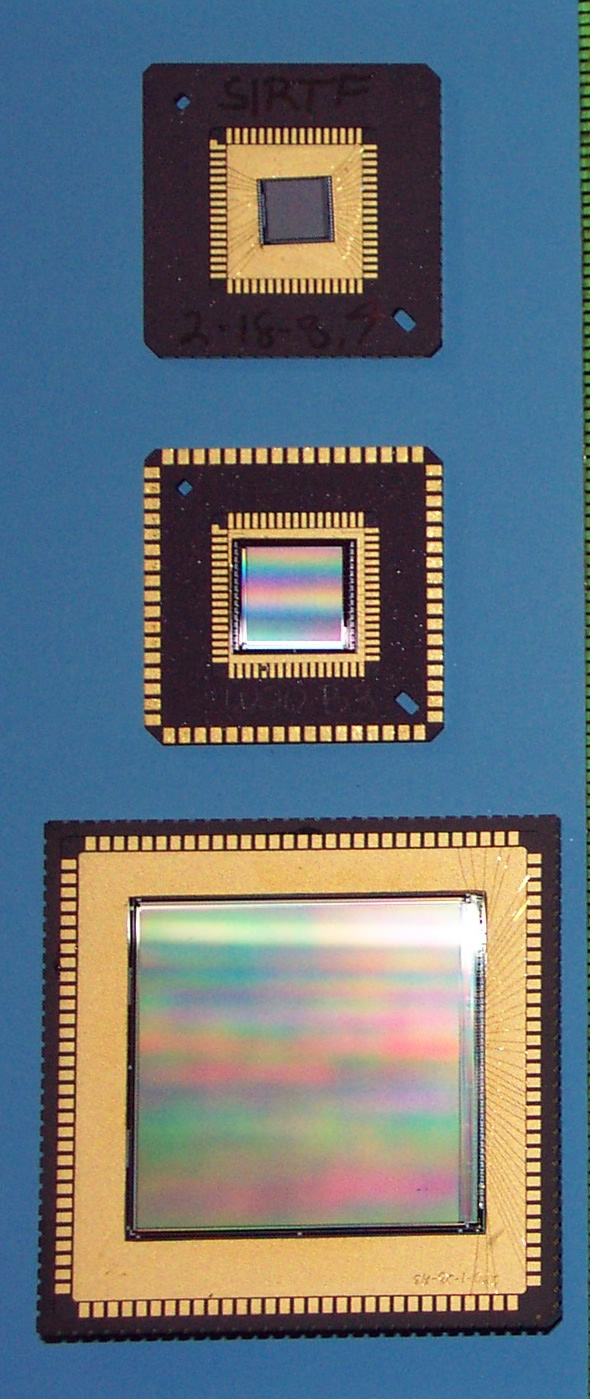

The lectures take place in the Huygens building #106/7 on Wednesdays from 9:00 - 10:45 hr (unless otherwise noted - see schedule below). The lectures run from 4 February through 1 April (no joke!).
The lecturer is Dr. Bernhard Brandl, office: #535 (Oort building), phone (071) 527-5830, email. The teaching assistant is Michael Wilby, office: #570, email .
Detectors are the crucial link between the astronomical target and the observer. As astronomers are aiming at fainter and fainter objects the quality and calibration of the detector systems have become increasingly important. The main goal of this course is to provide an overview of the various physical principles and techniques to detect electromagnetic radiation, from the UV to the sub-millimeter. Course topics are intrinsic and extrinsic photo-conductors, photodiodes and other junction-based detectors, detector arrays, bolometers, coherent receivers, and submillimeter- and millimeterwave heterodyne receivers. The course will not only provide the physical background of the various detector technologies but also cover practical aspects, which are of general interest to the observer, such as cosmetic quality and detector artifacts, linearity and dynamical range, spectral response and bandwidth, quantum efficiency and noise. For more details see schedule below.
Credits for the course: 3 ECTS. Course level is 500. The course language is English.
The course will be heavily based on the book Detection of Light - from the Ultraviolet to the Submillimeter, by George Rieke, 2nd Edition, 2003, Cambridge University Press, ISBN 0-521-01710-6. It is recommended that students get their own copy of this book.
Recommended for further reading are:
The final grade is based to 80% on the written exam and 20% on the mandatory homeworks. The exam date is 13 April, 14:00 - 16:00 hr. It is a written, "closed book" exam. Pocket calculators are required at the exam.
|
# |
Date |
Title |
Topics |
Homework |
|
1 |
4-Feb-15 |
Intro & Solid State Physics | General: grading, exercises, book, nature of light, EM spectrum, technology, photographic plate, overview of detectors principles and types; solid state physics: atomic energy levels, crystal: bands, (animation!), conductors and semi-condd., k-vector, Fermi energy |
|
|
2 |
11-Feb-15 |
Intrinsic Photoconductors & Noise | general principle, box diagram, conductivity, mobility, tau, gain, quantum efficiency and responsivity; intro noise: poisson & Gaussian & 1/f noise; detector noise: Johnson, kTC, 1/f, BLIP |
|
3 |
18-Feb-15 |
Extrinsic Photoconductors | energy bands, doping, wavelength ranges, limitations, drawbacks and comparisons; BIB detectors, photodiodes, avalanche diodes |
|
4 |
4-Mar-15 |
IR Arrays & CCDs | IR arrays: principle, construction, readout electronics; CCDs: principle, back/front illuminated, thinned, readout, CTE, CT architectures, GAIA example, variants |
|
5 |
11-Mar-15 |
Operations and Artifacts | Readout schemes: SUR, Fowler, linearity & dynamic range, data rates; cryogenics: cryo-vac environments, cooling requirements |
|
6 |
18-Mar-15 |
Bolometers | Basic operation, time constants, superconducting, edged; comparison: responsivity, noise, NEP |
|
7 |
25-Mar-15 |
Heterodyne Detectors | general principle, IF, mixing, sidebands, bandwidth, components (HEB, SIS); performance: throughput, S/N, noise and antenna temperature, comparison coherent-incoherent detectors |
|
8 |
1-Apr-15 |
New Technologies | Superconductivity, SIS, HEBs, SQUIDs, TESs, MKIDs. |